Last Updated on October 11, 2023
Fachwerk (half timbered houses) is an ancient way of building profane buildings (that is, not churches). Similar basic principles were used in many places. But it was the Fachwerk that reached the height of art, reflecting in its development all cultural epochs – from the Middle Ages to Art Nouveau.
Most of all half-timbered houses are in Germany, but they can be seen also in France and England.
You will find all half-timbered towns on my website by tag #half-timbered
Most half timbered houses in Germany by me:
Rothenburg what to see
Quedlinburg old town
Goslar – what to see
Black Forest (Schwarzwald). Schiltach
Schwäbisch Hall. 1. What to see in old town
Esslingen Old town and map
in France:
Rouen old town
Let’s walk through the history of half timbered houses in Germany using the information stands of the half-timbered museum in Quedlinburg (recommended). After this walk, you will be able to guess for yourself in what century the house was built.
However, it should be noted that decorations were made only on wealthy houses, and there are more of them in the north. In the south, half-timbered houses are simpler, and rich houses are more likely to be made of stone.

Construction principles
At the beginning of the Middle Ages, the ancient Germans built simple structures from poles. First they dug a hole about a meter deep, poles were driven into it, and the gaps between them were filled with wicker rods, straw and clay.
By the 11th century the climate has changed, it became much colder. It was necessary to build houses higher, to make a stone foundation that protects from the cold. The simplest structures no longer stood on the stone, they were too roll. So they had to make beams and struts. Thus, a half-timbered house appeared. In the future, the very principle of construction changed little. The technology improved, various decorative elements developed, but the frame made of wooden beams and panels of woven rods filled with clay remained the basis of the structure.
The house in Quedlinburg, dating from the latest research in 1346 and considered the oldest (or one of the oldest – it changes regularly) half timbered house, demonstrates the first stage of development of half-timbered houses.
Vertical posts run from the bottom horizontal beam to the top, where they are also held together by the horizontal beams. It is clear that such a structure cannot be high and you cannot call it tough either – it is evidently that the wall is curved. Interestingly, the house remained residential until 1968.
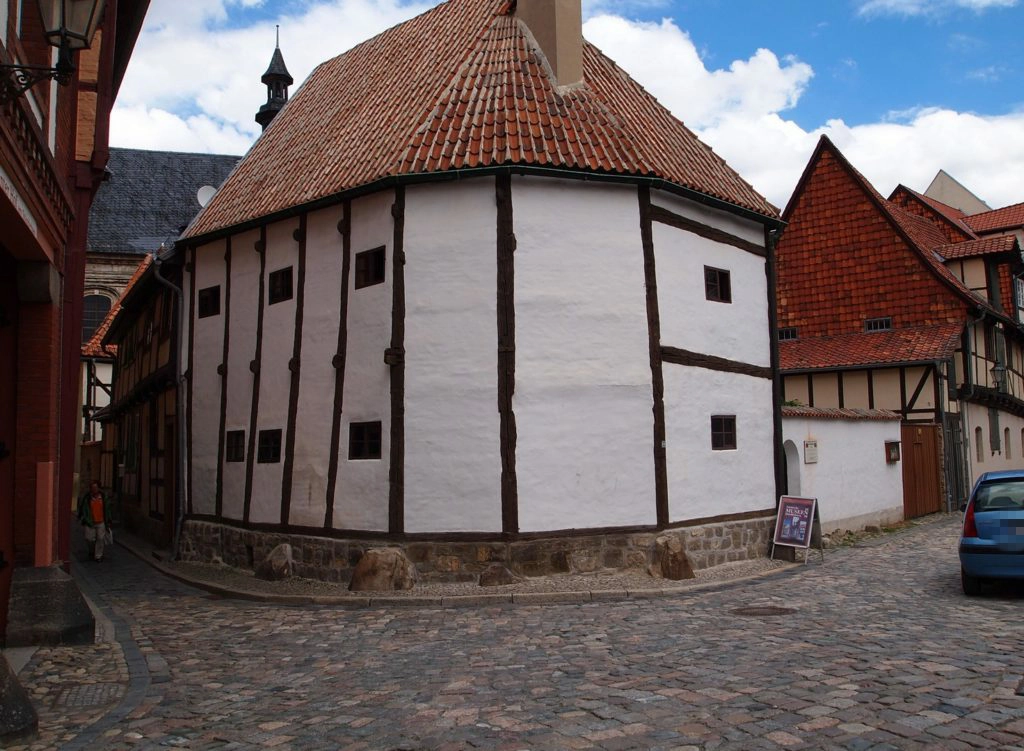
Structural elements
Half-timbered construction consists of:
- base A. The stone base extended the life of the wooden structure and protected it from moisture and cold. In later centuries, wealthy citizens made the ground flour or semi-basement completely stone.
- wooden horizontal beams that:
put on the base – B,
tie the upper ends of the vertical posts – C,
support floor – D or roof – E

- vertical posts – G
- cross-beams H, J
- long struts to reduce the load between horizontal or vertical beams – I
- short struts between horizontal and vertical beams: K, L
- consoles and struts that strengthen the second floor, – M, N
- attic window for loading goods – P

- a wind board protecting the tile edge – V
Combinations of different types of beams and struts form peculiar shapes
– “wild man” (Wilder Mann) R. The figure of “man” in different regions has differences – for example, with the “waist” (“Swabian woman” – photo above)
– “half a man” (Halber Mann) S
– St.Andrew’s cross T
– Thuringian staircase U
Also used for decoration
– various consoles X, W
– extensions of beams O
– panels with different profiles Y


Mounts and panels
The beams are still fastened with wooden nails and grooves. The panels between the beams are shaped due to the interlacing of rods and are filled with clay, straw, and in some places also with construction waste. In later eras, brick panels began to be made.
The panels were plastered to protect the clay and reduce the spread of fires. For this, they built stone walls between the houses – firewalls.
Panel filling variants.
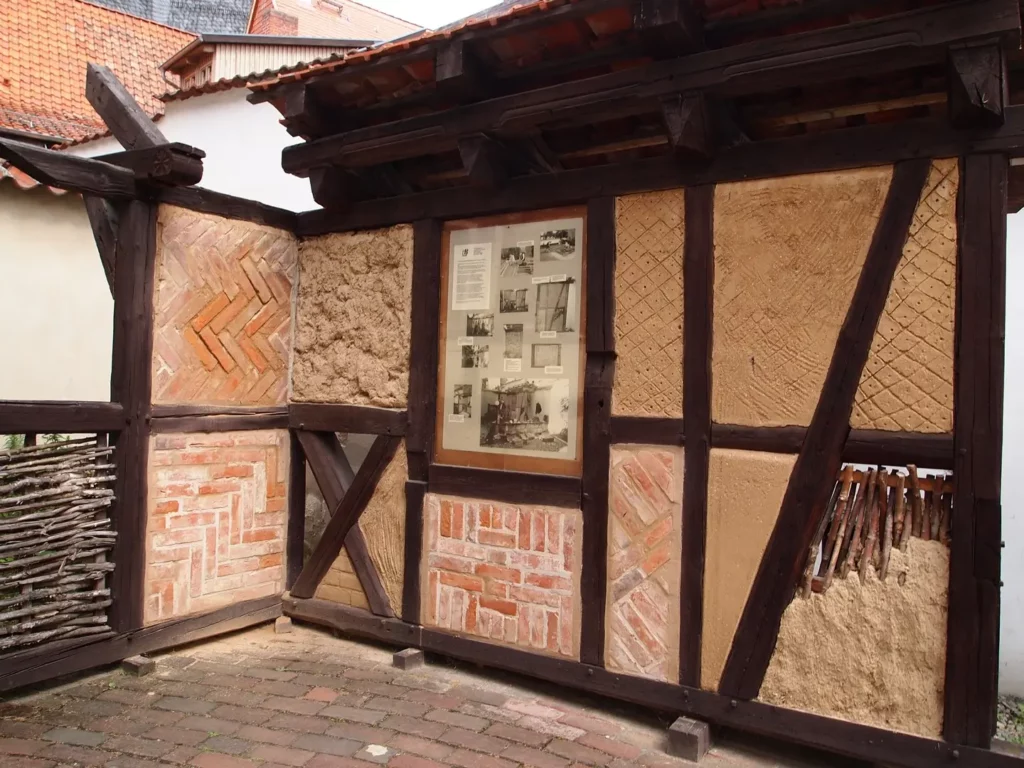
Next, let’s see how half-timbered houses have changed over time.
Gotic
From the simplest structures, they move on to floor-by-floor construction, when the details of each floor were fastened together, and only then each new floor was, as it were, put on the previous one.
The upper floor was made wider than the first, presumably to increase the living space, since the first floor, as a rule, could be made very small. At the same time, it made it easier to load goods into the attic, where warehouses were often located. Commercial and work space was on the ground floor, while the warmer middle floors were residential.
The late Gothic period (1400-1535) is characterized by such decorations
– staircase pattern
-keel of a ship
– the ends of the beams were shaped in a pear shape
The walls were also covered with picturesque patterns, but most of them have not survived.

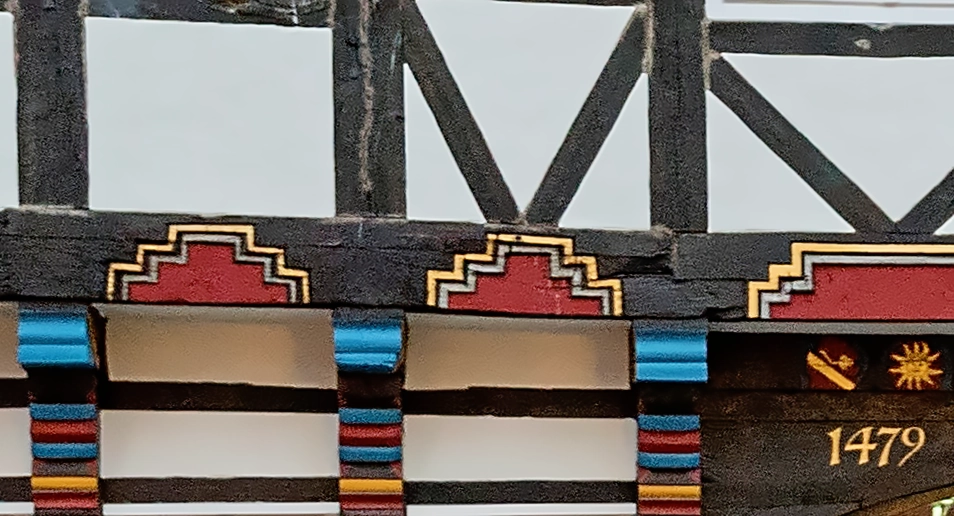

For example here:
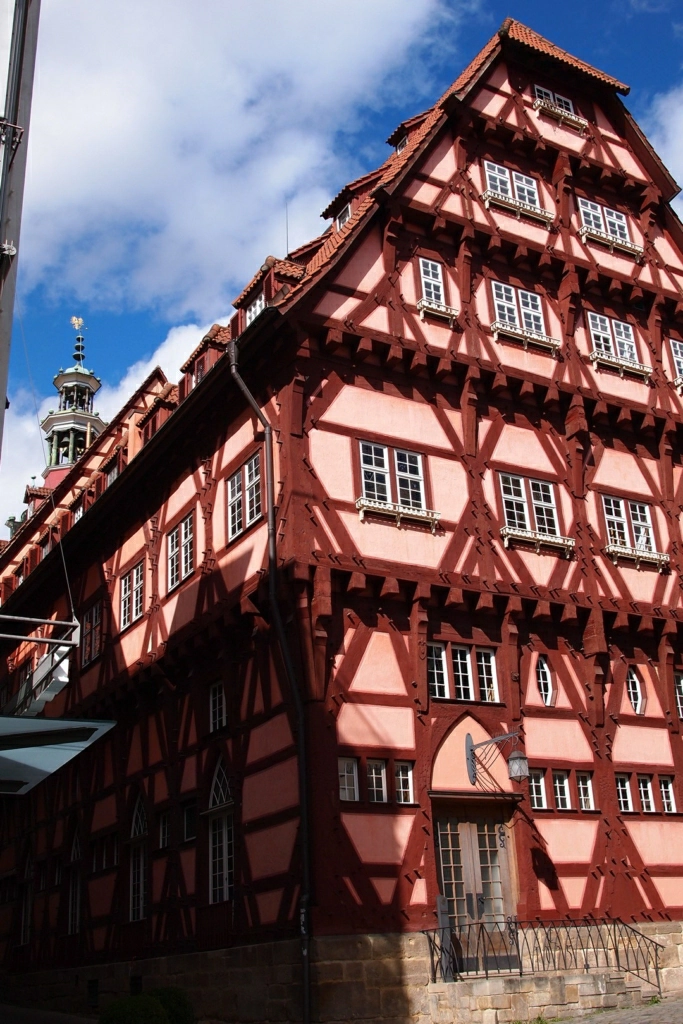

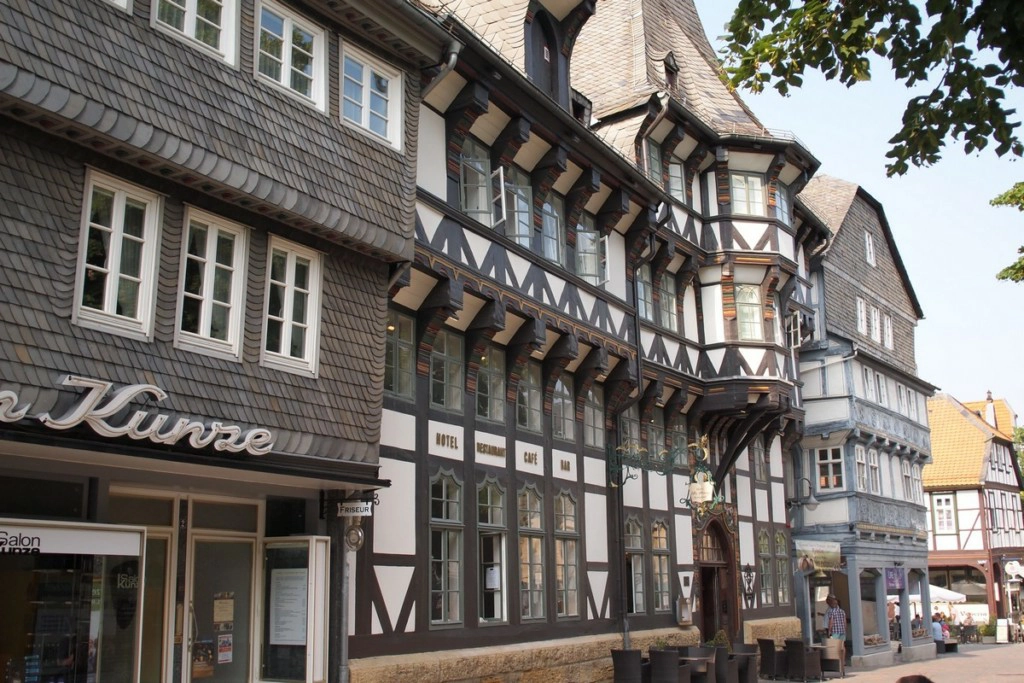
“Ship’s keel” is one of the main decorations. Doors also often had this shape.
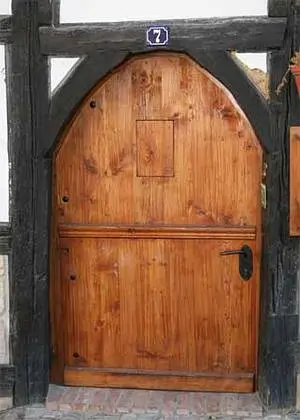
Renaissance
The Renaissance (1535-1610) influenced the appearance of half-timbered houses. The floor-by-floor construction method allowed an increase in the number of decorations, and they began to pay maximum attention to the decor: the more beautiful the house was, the more influential and wealthy the owner was considered.
Typical decorations of this period
– keel of a ship
– the ends of the beams, extending perpendicular to the facade, were made in the form of cylindrical rollers and decorated with round wooden panels. Such rollers could also be where no beam exited
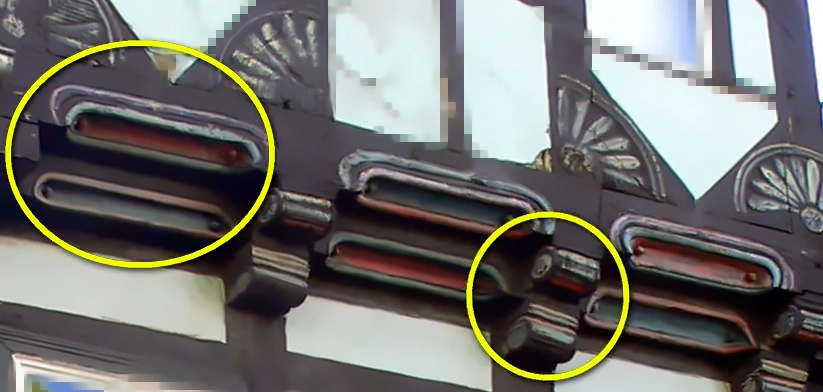
– tapes
– rosettes in the form of a spiral, a solar circle, a palm tree, etc. were very popular

– “rope” – decoration in the form of twisted ribbons
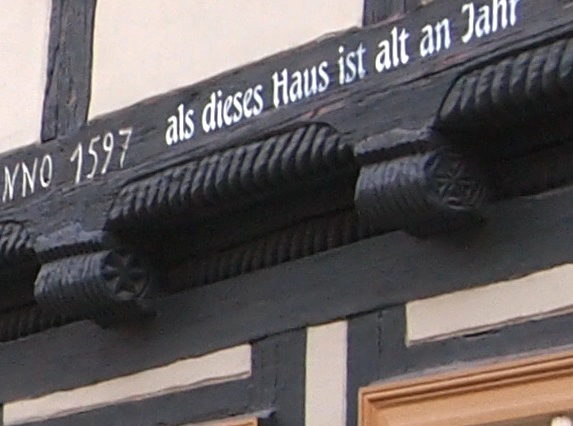
For example:


– inscriptions
– round panels with sun, stars, roses
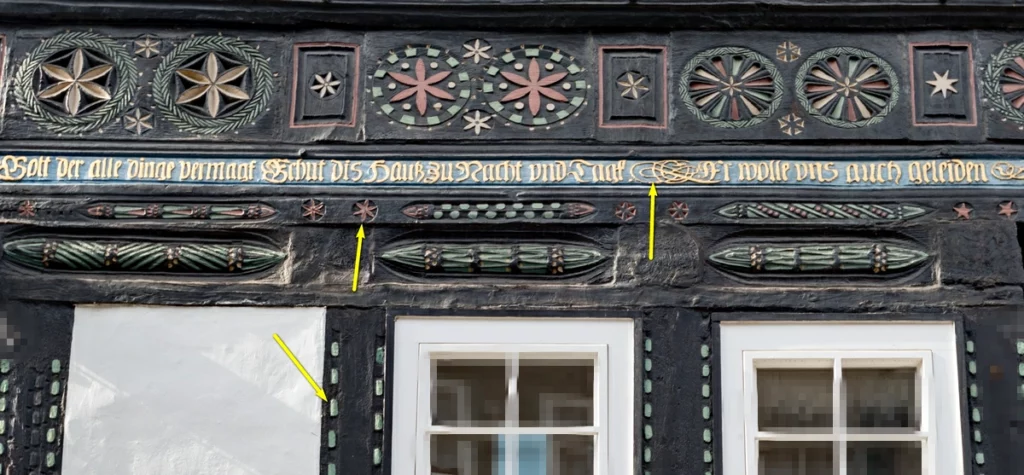
Examples


Mannerism (1610-1635 гг.)
Typical decorations:
– “ropes”, in the form of a pillow with patterns, a rope with a toothed pattern
– patterns with convex in the form of eggs
– consoles with patterns, grotesque heads

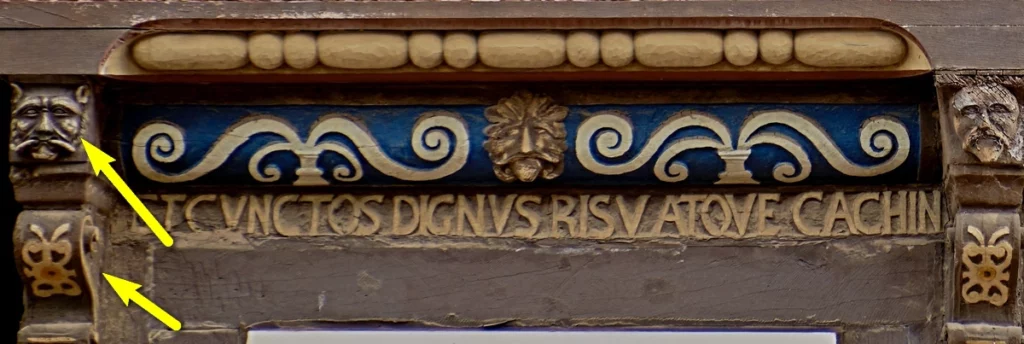

– fake arcades
– curly patterns and flower vases
– rosette in the form of a spiral with a floral motif in the center

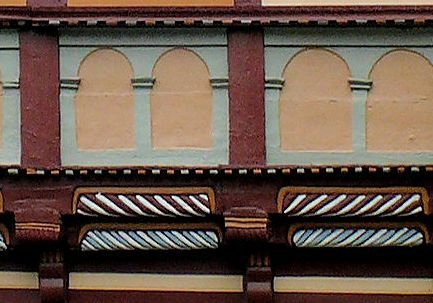
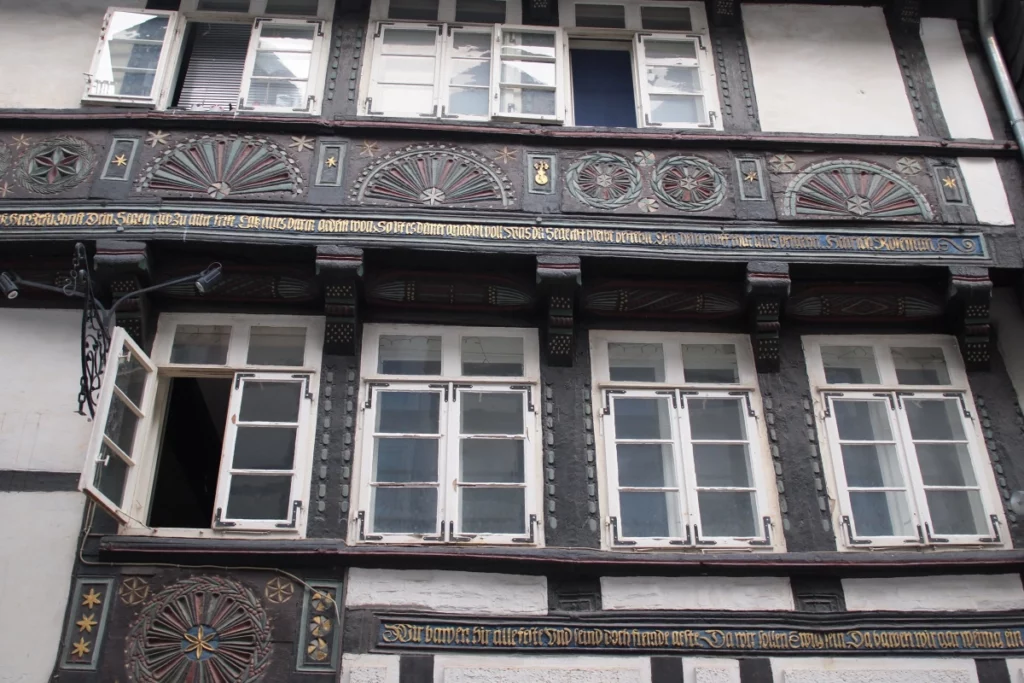

Baroque (1635-1710 гг.)
After a 30-year war, the cities were actively built up. You can often come across Baroque houses and you can easily recognize them by rhythmically alternating patterns of beams.
The principle of construction changed a little again: the beams began to be placed at an equal distance from each other or in a certain rhythm – with alternating wide and narrow gaps. Builders began to sign their houses with initials or to depict their “coat of arms”. So many houses can be accurately dated. The identification mark of this period is that the protruding ends of the beams were made in the form of a pyramid or diamond.
-St. Andrew’s cross in a rhombus (most typical)
– St. Andrew’s cross
– leaf pattern
– pillow with a floral curly motif
– the ends of the beams with a pattern of leaves
– console with a leaves-pattern
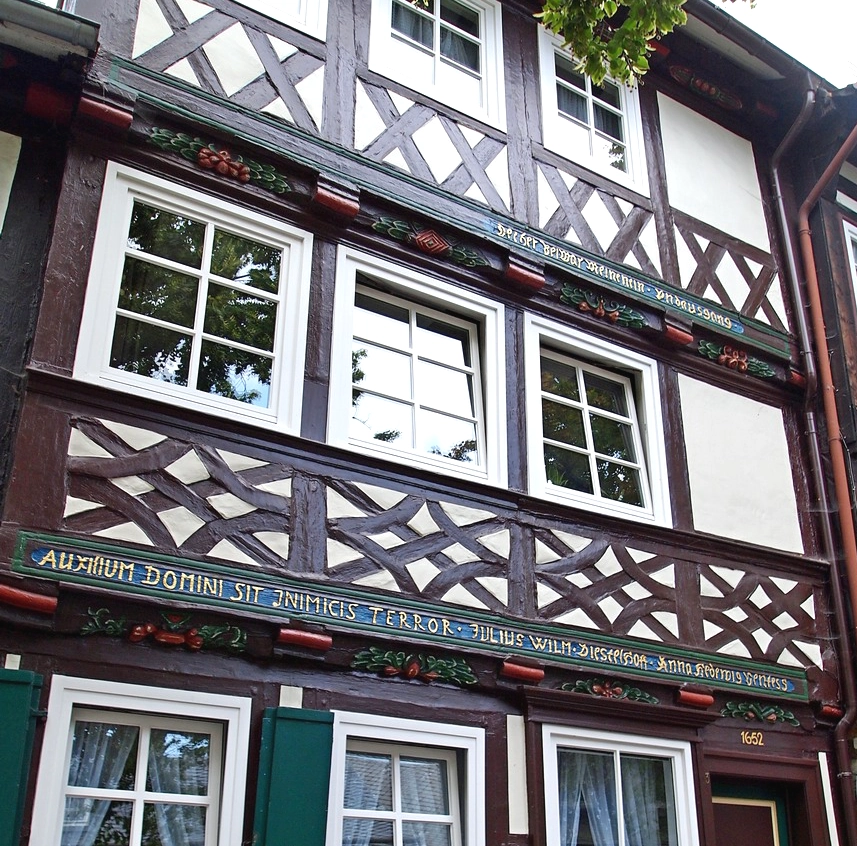
– keels of ships became narrow or double
– ends of beams in the form of a pyramid or diamond
– ropes – profile strips, hinged frieze
– cornice decoration
– in the form of a mounted frieze
– console-cornices
– Thuringian staircase



– toothed
– angel (“angel flight”, Guardian Angel)
– grotesque masks
– balusters
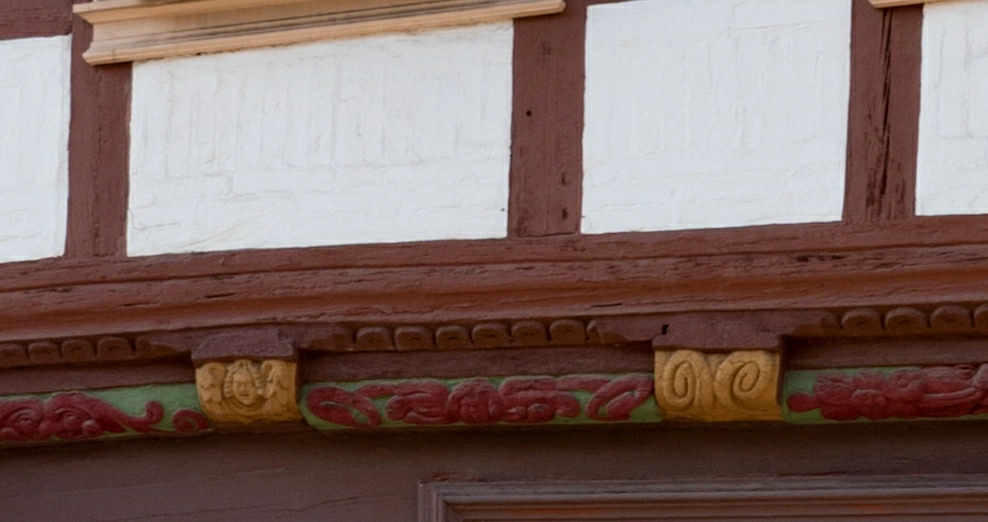



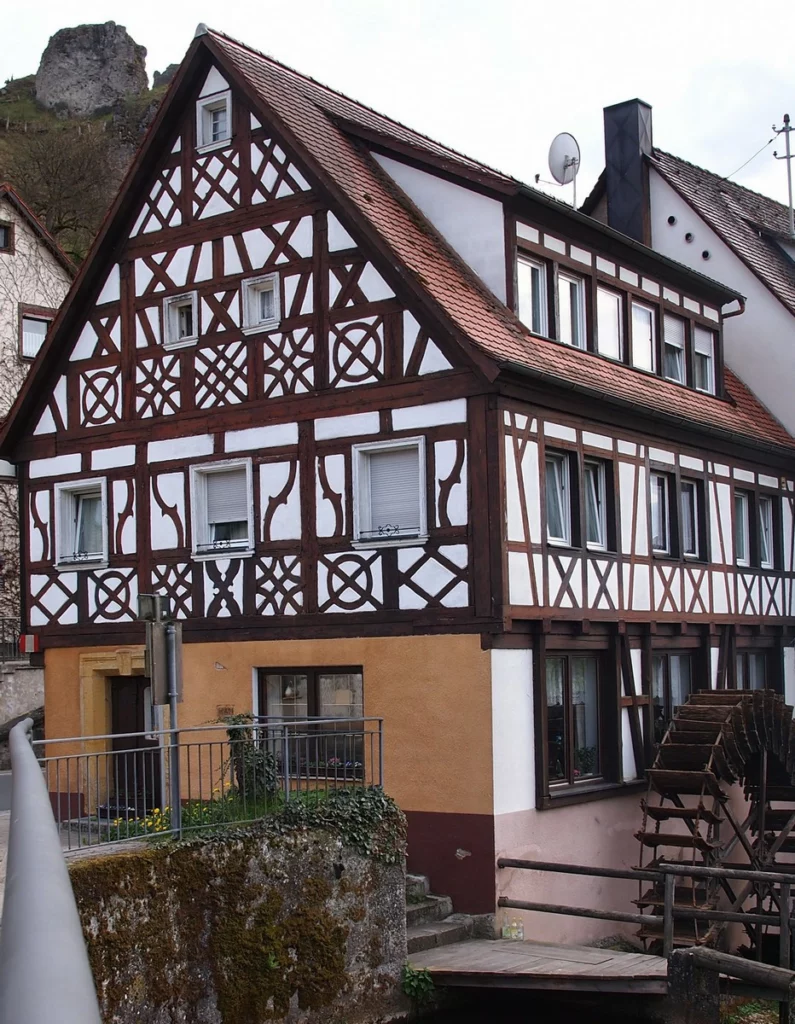


Late Baroque and Classicism
From the 18th century in construction less and less attention is paid to decorations. Facades are becoming simpler and stricter. The upper floors protrude quite a bit. The panels are no longer filled with clay – only with bricks. Houses are plastered entirely, as if they were made entirely of stone. At this time, cities are growing, more residential space is required. The attics are no longer warehouses, and the vast lower floors are divided by walls, an additional floor is being completed: the first floor is divided in half.
– double beams
– above-window patterns in the form of ears and shells
– panels are covered with plaster and painted

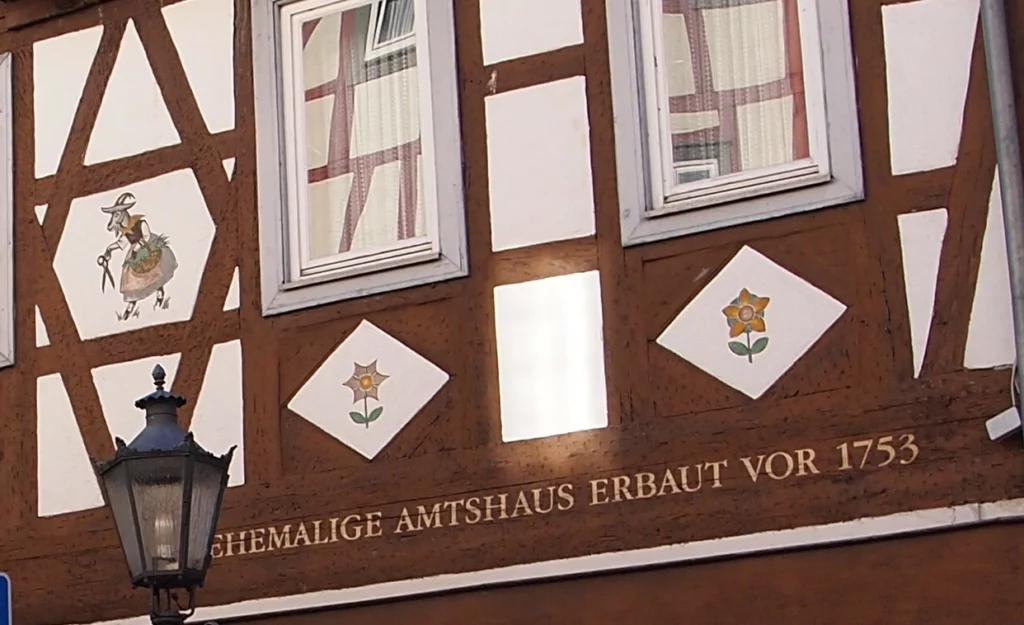
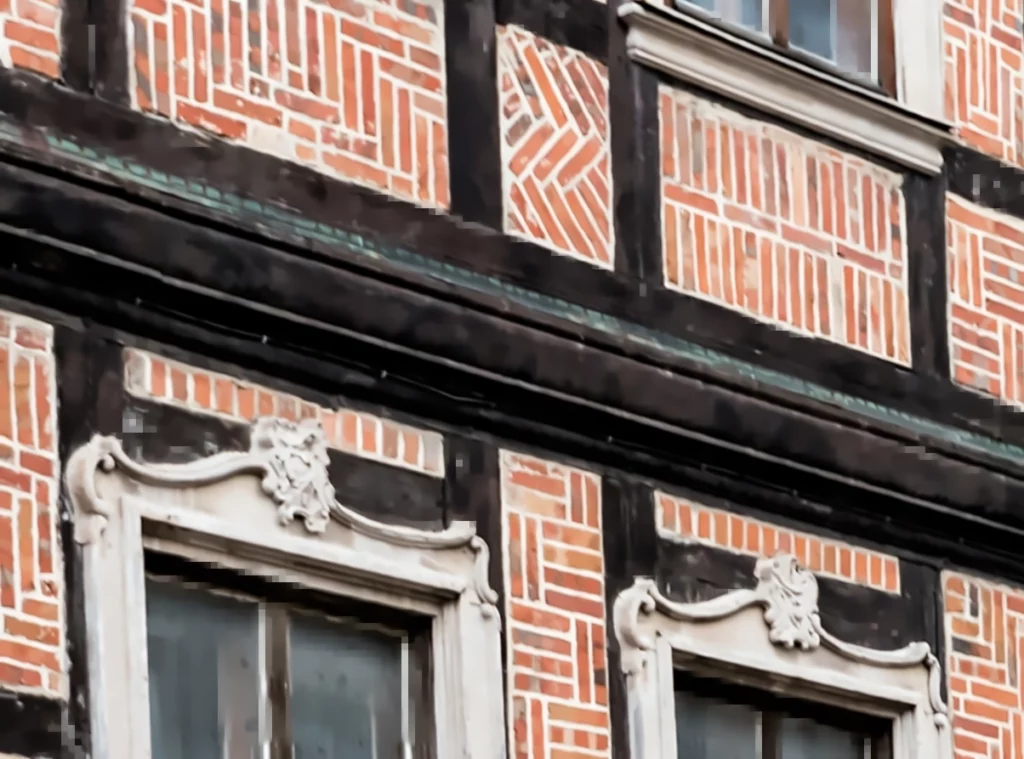
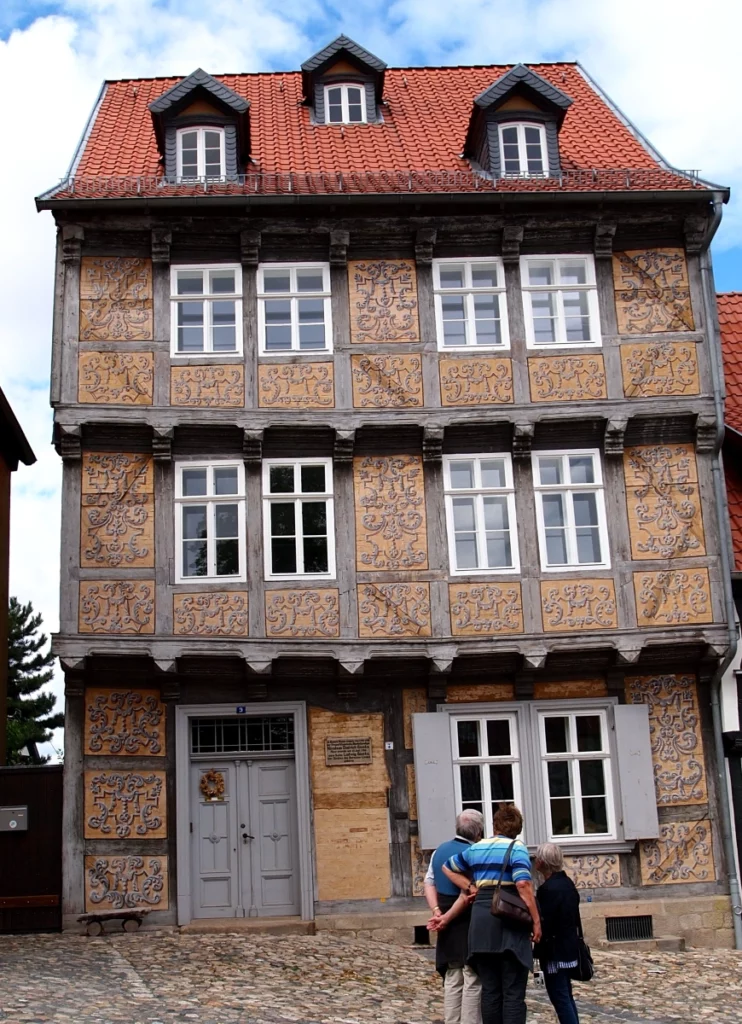
Follow me
Historicism, Jugendstil
In the 19th century steel was widely used. Medieval motives are back in vogue.
They use the motif of a staircase (from the 15th century),
keels of ships (16-17 centuries)
The ends of the beams are decorated in the 15th century style (pear-shaped), 16th century (cylinder), 17 in. (cornice).
The consoles are created in their own extravagant forms, reminiscent of the Renaissance or Baroque.
Cross figures and windows are reminiscent of the 17th century Franconian style,
and the rosettes are 16th century Lower Saxon half-timbered houses.
Original Art Nouveau decorations are also created.





Most often these will be private villas with a garden outside the historic center.
You will find all half-timbered cities, including French ones, by tag #half-timbered
Do you enjoy the site without cookies and maybe without ads? This means that I work for you at my own expense.
Perhaps you would like to support my work here.
Or Cookie settings change: round sign bottom left


amazing workmanship